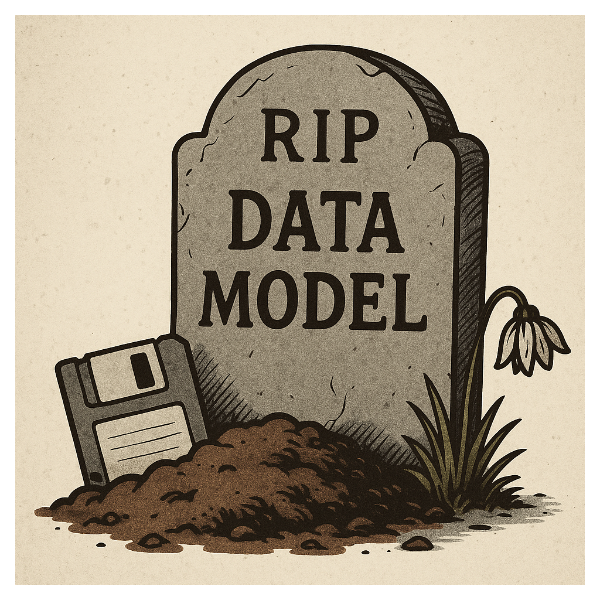Good Enough: Balancing Gold-Plated Dreams with Real-World Data Architecture
Data architecture under budget and time constraints: balancing value, governance, and documentation without over-engineering.

When stepping into most data projects, as a data architect, I will have an initial blueprint in my head. This blueprint is a pristine, gold-plated design: cloud-native, infinitely scalable, self-healing with perfect governance, and future-proof for the next decade. Then there is the system that actually gets built, shaped by time, budget, and a long list of business priorities.
The truth is, the job is not about building the most elegant system on paper. It's about delivering the most value possible under the constraints we are given, without setting future teams up for failure. And that means knowing when "good enough" really is good enough.
The Myth of the Perfect Solution
It's tempting to design for every edge case, every future use, and every hypothetical scale scenario. But most buisnesses don't need some bulletproof data mesh on day one. They need a system that gets them the right numbers, reliably, in a way they can trust.
Perfection is seduction, but often irrelevant. If your "perfect" solution takes 2 years to implement, it might be obsolete before it is ever used. And yes, I've spoken to organisations that really have spent that long on architecting a solution without ever producing a single report, piece of analysis, or one single insight for the business.
Time and Budget as the Invisible Stakeholders
We all know about our stakeholders: the business teams, analysts, and execs who need something from the data. But every architect has two invisible stakeholders in the room, time and money (and sometimes a third, resources, but they are usually a time and/or money issue).
You can design the best system in the world, but if it's too expensive or takes too long to deliver, it's useless.
What "High-Value" Really Means
High value doesn't mean technical elegance. It means enabling the business to make better decisions faster.
Sometimes the most value comes from making sure finance get thier month-end numbers on time. Sometimes it's just reducing pipeline failures. Sometimes it is freeing an analyst from a week of manual Excel wrangling.
If you can remove pain points and give people trust in the data, you're already winning.
Trade-Offs and Designing for Today
Every architecture decision is a trade-off:
- Scalability vs. speed of delivery
- Automation vs. flexibility
- Best-of-breed tools vs. working with what you've got
You don't need to solve every future problem today, but you should avoid painting yourself into a corner.
Maybe start with batch pipelines because they're quick to deliver, but choose a framework that won't block you from moving into streaming later. Maybe you could settle for a smaller warehouse now, but structure things so scaling up won't require a total rebuild.
"Good enough for today" is fine, as long as it leaves the door open for tomorrow.
Governance: Right-Sized, Not Gold-Plated
Governance is usually the first thing to get deprioritised when budgets are tight, until something breaks. It can also be a massive drain on resources and overkill for some organisations if you get carried away with it.
The trick is to right-size it:
- Define ownership of key datasets
- Put lightweight access controls in place
- Capture just enough metadata so people know what they're using
You don't need a 400-page governance policy. You just need enough structure to prevent chaos.
Documentation: The Shortcut to Future Value
Documentation can sometimes be the other thing that gets dropped, and just as quickly regretted. Everyone thinks, "We will write it later." And then later never comes.
Again, you don't need perfection though. Small efforts pay dividends:
- A README in your repo explaining pipeline logic
- A one-page data dictionary for your most-used tables
- A simple diagram of how systems connect
These lightweight artefacts save future data engineers (and potentially you) from playing archaeologist 6 months down the line.
Communication as Architecture
Architecture isn't just technical design, it's also communication. A big part of the job is explaining why you built what you built. Why it's maybe not the fanciest system, why the governance looks "lightweight", and why the minimal documentation is still worth the effort.
Being transparent about the trade-offs builds trust. Is also helps stakeholders understand that "not gold-plated" doesn't mean "cutting corners". It's about making smart, realistic decisions.
When to Gold-Plate (and When Not To)
With all this said, there are times to aim higher. Security, identity and access management, and critical infrastructure decisions deserve a bit more careful planning. Those foundations are painful to fix later.
But certainly for experiments, proofs-of-concept, or rapidly changing business requirements? Don't gold-plate. Focus on speed, adaptability, and keeping future options open.
Architecting under constraints isn't about lowering the bar. It's about focusing on the essentials that deliver value today while leaving room for tomorrow.
At the end of the day, no one is handing out awards for the prettiest data diagram. You will ultimately be judged on whether the system helps the business move forward, and sometimes the solution that is merely "good enough" turns and to be the one that's truely great.





